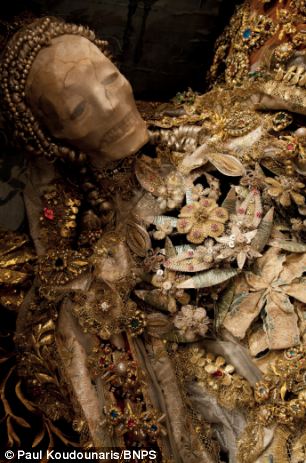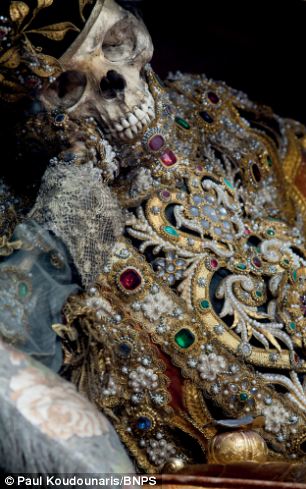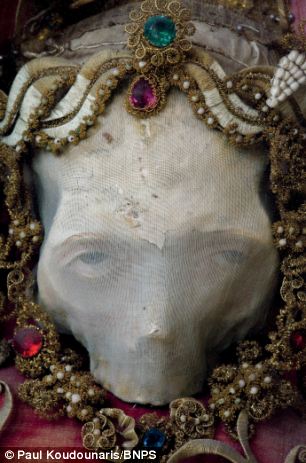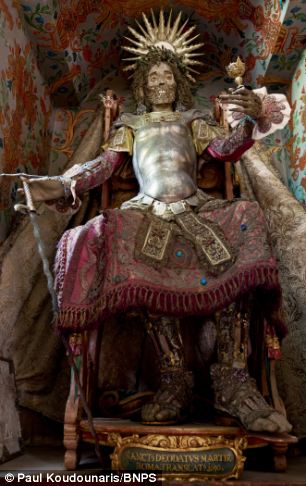A relic hunter dubbed ‘Indiana Bones’ has lifted the lid on a macabre collection of 400-year-old jewel-encrusted skeletons unearthed in churches across Europe.
Art historian Paul Koudounaris hunted down and pH๏τographed dozens of gruesome skeletons in some of the world’s most secretive religious establishments.
Incredibly, some of the skeletons, said to be the remains of early Christian martyrs, were even found hidden away in lock-ups and containers.
St Valerius in Weyarn: Art historian Paul Koudounaris hunted down and pH๏τographed dozens of gruesome skeletons in some of the world’s most secretive religious establishments.
St Albertus and St Felix: Incredibly, some of the skeletons, said to be the remains of early Christian martyrs, were even found hidden away in lock-ups and containers

They are now the subject of a new book, which sheds light on the forgotten ornamented relics for the first time.
Thousands of skeletons were dug up from Roman catacombs in the 16th century and installed in towns around Germany, Austria and Switzerland on the orders of the Vatican.
They were sent to Catholic churches and religious houses to replace the relics destroyed in the wake of the Protestant Reformation in the 1500s.
Spooky: St Deodatus in Rheinau, Switzerland (left) and St Valentinus in Waldsᴀssen (right). The skeletons were sent to Catholic churches and religious houses to replace the relics destroyed in the wake of the Protestant Reformation in the 1500s

‘After they were found in the Roman catacombs the Vatican authorities would sign certificates identifying them as martyrs then they put the bones in boxes and sent them northwards.
‘The skeletons would then be dressed and decorated in jewels, gold and silver, mostly by nuns.
‘They had to be handled by those who had taken a sacred vow to the church – these were believed to be martyrs and they couldn’t have just anyone handling them.
‘They were symbols of the faith triamphant and were made saints in the municipalities.

‘One of the reasons they were so important was not for their spiritual merit, which was pretty dubious, but for their social importance.
‘They were thought to be miraculous and really solidified people’s bond with a town. This reaffirmed the prestige of the town itself.’
He added: ‘It’s impossible to put a modern-day value on the skeletons.’

archaeology





